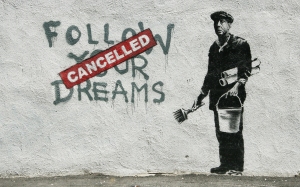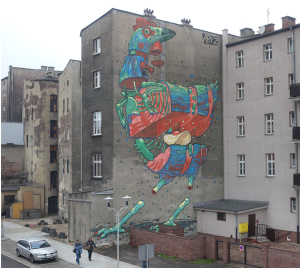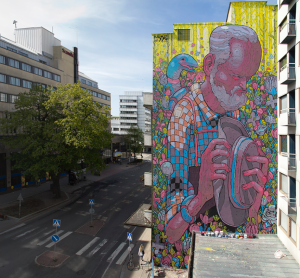What do the Spiders Mean?
I Don’t Understand This Movie
I love movies, and I watch more then is probably healthy, and one of my favorite types of cinema is psychological movies that make you think and question if what you know is real, causing emotions such as anger, love, and confusion, and “Enemy“, is on the top of that list. I have seen “Enemy” three times and I can not tell you what the movie is about, however in its most basic form it is about a man who seeks out his exact look-alike after spotting him in a film.
“Enemy” was released independently in 2013 and was successful in that fact, grossing over a million dollars and winning 18 awards. The film is based on a book titled “The Double” by Jose Saramago, however the script was written by Javier Gullon, who typical writes for Spanish film which this is not. The script is an interesting one with not much dialogue but keeping your attention throughout. That being said I think director Denis Villeneuve is the spear head behind the brilliance of the film. He keeps you on the edge of your seat in scenes that contain nothing and finishes the film with a haunting final scene like nothing i’ve seen before.
Javier Gullon, who typical writes for Spanish film which this is not. The script is an interesting one with not much dialogue but keeping your attention throughout. That being said I think director Denis Villeneuve is the spear head behind the brilliance of the film. He keeps you on the edge of your seat in scenes that contain nothing and finishes the film with a haunting final scene like nothing i’ve seen before.
Aside from the wonderful directing, the music was a huge influence on the intensity of the film. Accompanied with the directors thrilling shots this caused audience members never to drop their gaze. The thrilling score was done by Danny Bensi and Saunder Jurriaans. Aside from the score a lot of the audio in the film was natural however there is a car crash that was manipulated by a foley artist. There is also one real song that is played in the movie, that also ties into the plot as well called “The Cheater”. It plays as the character is in a movie store
The lighting of the movie was another important part of the film.

With a lot of dark shots and the light having a hazy yellow glow made every scene seem eery.
Accompanying the light great shots and transitions were used in the film. A camera shot that is used more then once in the film is a wide angle location shot that shows the sky line of Toronto, (where the movie was filmed). It sets the scene and allows for the viewer to know the environment of the character. The setting was in the city so there were no extravagant location changes. This is a portion of the film that was made to look mundane as to make the movie more suspenseful, as to make the world seem normal. There is one notable transition in the film where it is just three shots showing the city with black cuts in between each shot. That being said it is the most thrilling transition ever. With rising booms on each scene it is literally one of my favorite parts of the movie. It causes the viewer to lean into the screen and gasp even though nothing is happening.
Jake Gyellenhal is the lead actor in the film but a very important supporting character is played by Sarah Gadon. She has no other big notable roles however she has been in films such as “The Amazing Spider Man 2″ and “Dracula Untold”. With no major roles under her belt I think she is serously underated because she killed the preformance in “Enemy” and in my opinon would do very well in lead roles.
There were more then two special effects in the film but there are two big ones worth mentioning that wont spoil the plot. The number one special effect of the film is duplicating Jake Gyellenhal, since he plays two identical characters in the film. When they are in the same room they have to film the scenes twice with the exact same camera motions while Gyellenhal plays the two different roles. A difficult maneuver but executed perfectly with eye lines matching and allowing the viewer to believe that there are indeed two of the same person. The second notable special effect was the making of realistic looking objects that didn’t actually exist. Without giving to much away these visual special effects melded nicely into the film allowing the viewer not to question their reality. The make up and and costume design on the other hand was nothing too extraordinary which perfectly fit the film since the special effects were suppose to catch the viewer of guard.
This movie has symbolism but rather then begin to try and explain it, which there are many theories online to what it is, I would rather suggest to you, the reader of this blog, to watch it for yourself and try and figure out what it means. Your guess is as good as mine.
Here is the trailer for the film “Enemy” http://www.youtube.com/watch?v=FJuaAWrgoUY
Citations
“Enemy.” IMDb. IMDb.com. Web. 9 Aug. 2015. http/::www.imdb.com:title:tt2316411:%3Fref_=fn_al_tt_1










 “The Houses of Parliament at Sunset” by Claude Monet was painted in 1903, London. This is one of hundreds Monet painted of the Thames river and the Houses of Parliament. I find it not nearly as good as some of his other works such as “Impression, Sunrise”. Yes it has the same color scheme but the feel that i get from “The Houses of Parliament at Sunset” is less exciting. It is just bleak and has nothing for me to sink my teeth into. Maybe its because visually it doesn’t have the same depth but whatever it is, it makes it so Impressionism falls to the bottom of my list of art styles I like.
“The Houses of Parliament at Sunset” by Claude Monet was painted in 1903, London. This is one of hundreds Monet painted of the Thames river and the Houses of Parliament. I find it not nearly as good as some of his other works such as “Impression, Sunrise”. Yes it has the same color scheme but the feel that i get from “The Houses of Parliament at Sunset” is less exciting. It is just bleak and has nothing for me to sink my teeth into. Maybe its because visually it doesn’t have the same depth but whatever it is, it makes it so Impressionism falls to the bottom of my list of art styles I like.




